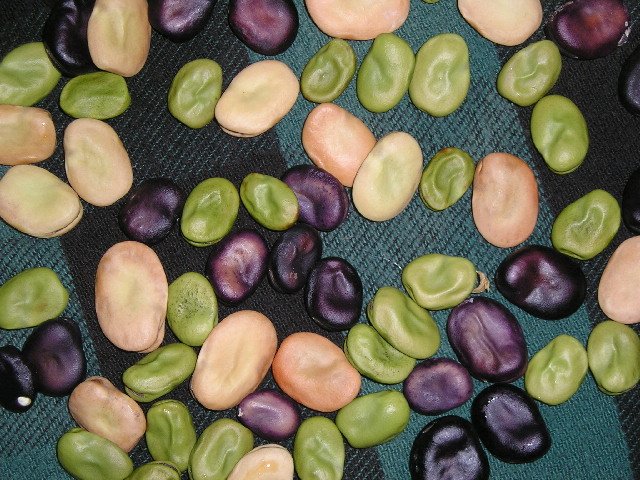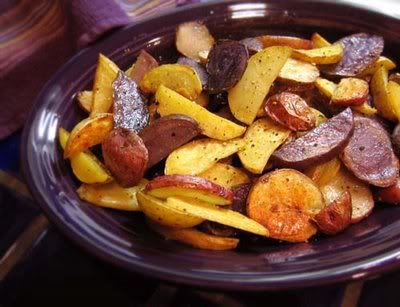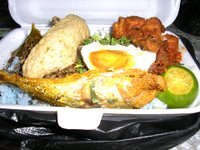Salamalaykum, the eggplant pancakes sound altogether too yummy because now I want to eat more than I ought, but this post is about Halva.
This is from a post I made in a local Muslim website. I had just been at a public event celebrating Bedouin culture here in the public library and there were sweets being given out. I also learned a recipe for cooking coffee in a Saudi Arabian style, which is a really effective way of not needing milk to reduce the acidity in the coffee. So I wanted to give away a recipe in thanks. I thought of my family Halva recipe, but it has a long story attached. Perhaps I mentioned it within this context once before, but without giving the recipe proportions.
There was an opportunity to look up all the semolina Halva recipes I have at home last night. The recipes are in two groups, those which fry the semolina then add a hot syrup, and then those which use a cold syrup and bake the dessert. The recipe which I got via my mother, from my Grandmother, who was an Australian married to a man whose parents were some early Greek emmigrants to Australia, is a recipe which uses a frying technique, but was always taught to my Grandmother as a Halva, by her sister-in-laws, whom thought ill of their younger brother to have married outside the Greek community. I have also collected other similar recipes from books and friends. Sometimes the technique of frying the semolina is taught as disqualifying the recipe from being named a Halva. In Syria the technique is for Ma Mouria, and it is also called Ba Bousa, but I have not yet found out what language that is from. Why I first became interested in collecting the range of different, but similar recipes, is because semolina desserts and breakfasts are cooked in the same styles throughout the region ranging from Eastern Europe to India. Usually in Australia Halva is associated with being only a sesame seed Halva from Turkey, Lebanon, Syria, or Greece, so I had constant reminder as a child that Halva was not always what we were being taught to regard it as, and perhaps that is what originally stimulated my curiosity.
I should say also a little about my Great Grandmother whom this has been brought to Australia by. She emmigrated at 26 years old during world war one, and here met and married my Great Grandfather. He treated her badly because he had an idea about being better than her because of having blue eyes and blonde hair, which in Greece means no Turkish ancestry. But her own family are that part of our Greek ancestry whom claim right to the story of the Odessy. When I was born a red head, my Greek Great Aunties all named it as a sign of direct descent from Odesseus because my Great Grandmother's father's house is built upon the site of his palace. Perhaps the story is only that he is from Ithaca and had red hair. I don't know whether that is true or can be verified, but I have had a very strong Dream in Allah of entering a Mosque at that place, in the company of the local Imam here in Brisbane whom has met me. The Mosque in Greece had paint peeling from the walls, but was also very well attended, in the Dream that is. My Great Grandfather was a stow away from Ithaca, at fourteen years old, on board a ship to Australia, in 1907. It was before passports were needed, and at customs all the Greeks were being asked their names, and then give an English name which sounded similar, because the customs blokes could not pronounce the Greek. My Great Grandfather did not want to lose his name, and so changed it him self, from Kalinikos to Caling. As far as I know, my mother's brothers, and their children, are the only Calings, because of my Great Grandparents three sons, only my Grandfather had any sons. Oddly enough cutting the link to Europe of name only, seems to have enabled everybody with the Caling name to more properly orient here in Australia into the Indigenous Ummah. My Great Grandmother's maiden name was Amaranti.
Here is the recipe originally taught my Nana from her sister-in-law, who learned it from her own mother, who was from Ithaca:
2 cups honey
1cup sugar
1cup water
2 cups milk
(I try to use goats milk or A2 milk -the sort with protien strands that can not be broken before passing into the intestines- but it is a bit more difficult to replace the butter, though a combination of copha and olive oil is effective, for other folk like me with kidneys sensitive to the A1 milk proteins.)
½ lb butter
2 cups coarse semolina
cinnamon for the top
Heat the milk taking care not to boil it.
Make a syrup from the honey, sugar and water.
Lightly fry the semolina in the butter, stirring continually, until it just begins to change colour.
Add the hot milk and reduce the heat, stirring continually until all the milk is absorbed.
Add the syrup, trying to make sure it is neither hot enough to burn the milk, and keep stirring until the whole mixture can not be stirred any more. It takes up to half an hour and is ready when the whole mixture comes away from the sides of the saucepan in one mass, alike to other sweet preparation.
Be very careful because it burns easily at every stage.
Spread it into a lamington tin putting cinnamon on top, and refridgerate.
Cut it in to diamond shapes to serve.
The other recipes I have for similar sweets I will provide here also, but only the fried ones today, and perhaps the recipes for baked halva later. Where I know the country of origin I name it. I will not write a whole method for each one, only name the ingredients in two sections: that part for the syrup and that part which is fried in shortening. Where an ingredient is used only to decorate the top it will state that, because some ingredients occassionally can be put into the pan to fry, and also, or only, put on top.
From Greece:
Syrup part:
1 cup sugar
2 ½ cups water
For frying:
½ cup butter
1 cup coarse semolina
2 tbls pine nuts
1 tsp cinnamon
From India:
Syrup part:
¾ cup sugar
1 ¼ cups water
¼ cup milk
pinch of saffron
For frying:
125g ghee
¾ cup fine semolina
2 tbls sultanas
2 tbls slivered almonds
1 tsp ground cardamom
Almonds to decorate the top
From India but a similar savoury dish for comparison of the cooking method:
Syrup part:
2 ½ cups hot water with saffron
For frying:
120ml ghee (olive oil is effective also)
½ cup sifted besan
¾ cup semolina
From Syria, this is a sweeter sort of Ma Mouria, eaten for breakfast after the days work has begun. Reduce the amount of water to make it more like a Halva.
Syrup part:
3 ½ tea cups water
3 tea cups sugar
1 tea spoon lemon juice
Fried part:
1 tea cup semolina
¼ lb butter
1 tsp ground cinnamon
Serve with cream if in a bowl for breakfast.
From Persia: this one uses ordinary wheat flour rather than semolina which is from the endosperm of the grain of wheat, so is that part with the least protein. Semolina is a good starch for sweets because it has less protein and so is less likely to stimulate a diabetic reaction, but it must be assumed that often enough when semolina is not available, many of these recipes have been made with plain wheat flour.
Syrup part:
85 ml water
4 oz sugar
1 ¼ tsp cinnamon
85 ml rose water
For frying:
2 oz butter or oil
4 oz plain white flour
Chopped pistachio nuts to decorate.
I like this recipe because as young child, I learned to like rose water in cooking through learning Indian cookery, and learned to like pistachio nuts because of my Greek ancestry, and in Persia there is a full reconciliation of the style of cooking from India and the style from Greece.
Here is the last recipe I have for a fried semolina dish, it is called a Ba Bousa and is very similar to the Ma Mouria:
Syrup part:
3 teacups water
2 teacups sugar
1tsp lemon juice
For frying:
2/3 teacup butter
1 teacup semolina
1 teacup blanched almonds.
What is curious to me is that the frying method for preparation of the same ingredients is called a Halva in Greece and in India, but the method of frying is used rather for a porrige style dish at places en route from India to Greece. I have not yet found any recipe books from places further north for comparison.
The set of recipes which are named Halva, and are a semolina based baked dessert, have far wider variation in the ingredients. For example, some use eggs and bi-carbonate of soda to cause the dish to rise, while others forbid that cookery style being named as a Halva.
I first began to look up the recipes I have here through in the public libraries in Canberra, and my mother's cookery books, only because of a general curiosity about the linguistics of the word “Halva”. It was in 2001, which is the year I decided that it was time for me to become adept at doing all the family celebration food, and undertook to make the family Christmas food on my own that year. I had lots of fun, and my children had the best Christmas. We even had German Lebhuken biscuits without any shortening decorating our Christmas tree, and while the whole business was not especially Muslim, in the cultural context, it was during that year that I first entered the Ummah, at Easter.
Is Halva a word in use in Arabic I wonder? A well educated friend of my parents informs me that it is a Sanscrit word.
Alaykumuassalam








